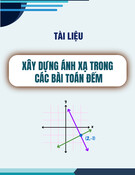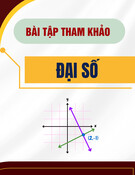
L E C T U R E 2 : P R O B A B I L I S T I C A N A L Y S I S A N D
R A N D O M I Z E D A L G O R I T H M S
Advanced Mathematics Topics
in Computer Science

Roadmap
Sample Space and Events
Properties and Propositions
Probabilistic Analysis
The hiring problem
The hiring problem

Sample Space
Definition: The sample space S of an experiment
(whose outcome is uncertain) is the set of all possible
outcomes of the experiment.
Example (child): Determining the sex of a newborn
child in which case
child in which case
S = {boy, girl}.
Example (horse race): Assume you have an horse
race with 12 horses. If the experiment is the order of
finish in a race, then
S = {all 12! permutations of (1, 2, 3, ..., 11, 12)}

Events
Any subset E of the sample space S is known as an event;
i.e. an event is a set consisting of possible outcomes of
the experiment.
If the outcome of the experiment is in E, then we say that
E has occurred.
E has occurred.
Example (child): The event E = {boy} is the event that the
child is a boy.
Example (horse race): The event E = {all outcomes in S
starting with a 7} is the event that the race was won by
horse 7.

Axioms of Probability
Consider an experiment with sample space S. For each event
E, we assume that a number P (E), the probability of the event
E, is denied and satisfies the following 3 axioms.
Axiom 1
0 <= P (E) <= 1
Axiom 2
P (S) = 1
Axiom 3. For any sequence of mutually exclusive events
{Ei}i>=1, i.e. Eiintersects Ej= Ø when i ≠ j, then
P (Union of Ei) = Sum of P(Ei)







![Bài tập Đại số tuyến tính [chuẩn nhất]](https://cdn.tailieu.vn/images/document/thumbnail/2025/20250930/dkieu2177@gmail.com/135x160/79831759288818.jpg)








